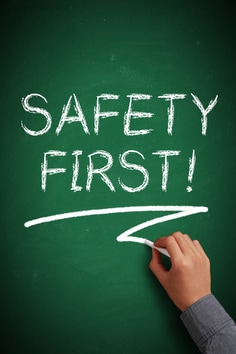
Recently I have read articles about the origins of current policies of measuring student growth and performance by use of standardized testing and, of course, the CORE directives. I rest in the camp of many teachers and parents who dislike CORE, the ‘teach to the test’ mentality, and the poor skills capacity of so many graduating and of the still attending students. Though I am a devoted Deming fan, Deming’s work was focused on inanimate product quality and consistency, not so much the spirit and soul of a human. We’ve unfortunately taken the yardstick away from corporal correctness and turned it into a barometer to evaluate human sausages being pressed like mute Play Dough out of the various shapes of a Play Dough Factory. The famed Stanford educator, Elliot Eisner, has written, “Not everything that matters can be measured, and not everything that is measured matters.”
Recently I have read articles about the origins of current policies of measuring student growth and performance by use of standardized testing and, of course, the CORE directives. I rest in the camp of many teachers and parents who dislike CORE, the ‘teach to the test’ mentality, and the poor skills capacity of so many graduating and of the still attending students. Though I am a devoted Deming fan, Deming’s work was focused on inanimate product quality and consistency, not so much the spirit and soul of a human. We’ve unfortunately taken the yardstick away from corporal correctness and turned it into a barometer to evaluate human sausages being pressed like mute Play Dough out of the various shapes of a Play Dough Factory. The famed Stanford educator, Elliot Eisner, has written, “Not everything that matters can be measured, and not everything that is measured matters.”
If our goal as a culture is to simply produce ‘hire worthy’ graduates, with the CORE as their only instituted capacity, we miss the fact that computers can now do all the functions of mathematics, writing, and reading. Computer speakers read text back to us, while creative software takes our spoken words and translates them into cogent memos, directives and policies. However, the computer does not delegate human qualities or values, including dignity, foresight and common sense. The creative element of humanity is also removed from our schools as we reduce funding for arts and other after school extracurricular programs. Instead, we have been reduced to an administrative zeitgeist of “dollars for heads…students in the seats.” Continuing this model will result in assembly-line output of mannequins; but beware, for the mannequins we see rising in the grades are sometimes angry and bitter.
Should you be unaware of the current undercurrent of violence and disrespect rumbling throughout numerous classrooms, at every grade level, then you, dear reader, are bereft of a full picture of reality. Assaults between students are epidemic. Numbers of assaults (acts of school violence) against students, teachers, staff are rising into the stratosphere, with some districts afraid to release the actual numbers as those might drive parents even further from their embattled halls.
If you want a blunt insight, spend some time over coffee with a police officer assigned to one of your local middle schools. There are many cited reasons for this wave of disrespect and outrage, but one, often missed, is that the “mannequins” have a soul and they realize they are being squeezed into wrappers they didn’t design. There will be a price far greater than dysfunctional adults from this generation if we don’t tilt the rudder back to a deeper humanitarian perspective…it could easily be rocks, bottles and tear gas in our streets.

Steps that parents can take on their own
to foster brighter futures for children
But our perspectives at Safe to Learn include reaching for answers to the conundrums we face. There are no silver bullets, but there are some steps that parents can take on their own to foster brighter futures for children caught in the Catch 22 of today’s pedagogical paradigm. Here are some suggestions, including those that truly relate to safety:
to foster brighter futures for children
But our perspectives at Safe to Learn include reaching for answers to the conundrums we face. There are no silver bullets, but there are some steps that parents can take on their own to foster brighter futures for children caught in the Catch 22 of today’s pedagogical paradigm. Here are some suggestions, including those that truly relate to safety:
- Take a first aid and CPR course with your children, including first-aid for pets
- Teach your children (and yourself) to swim
- Practice stop-drop-and roll for fire safety
- Develop and practice a home evacuation drill, including safe places to rejoin if separated
- Take your child to a police station and a fire station so they meet real first responders
- Give your child the gift that keeps giving…a library card…and teach them how to use the library
- Take nature walks with your child, and teach them which things they can and cannot touch
- Teach your child how to safely cook a simple meal
- Teach your child how to safely use a dust mop, vacuum cleaner, and to not touch cleaning chemicals
- Teach situational awareness to your children when you shop for food or at the mall, or in crowded places
- Share a letter writing experience with actual handwriting, including stamping and mailing…not just e-mail on a computer
Many of these are real life skills and experiences they may not learn from school classes or programs, but each of them opens a plethora of growth and development that will make a child more than a robot or ““mannequin” and will expand their horizons and excite their imagination.

 RSS Feed
RSS Feed